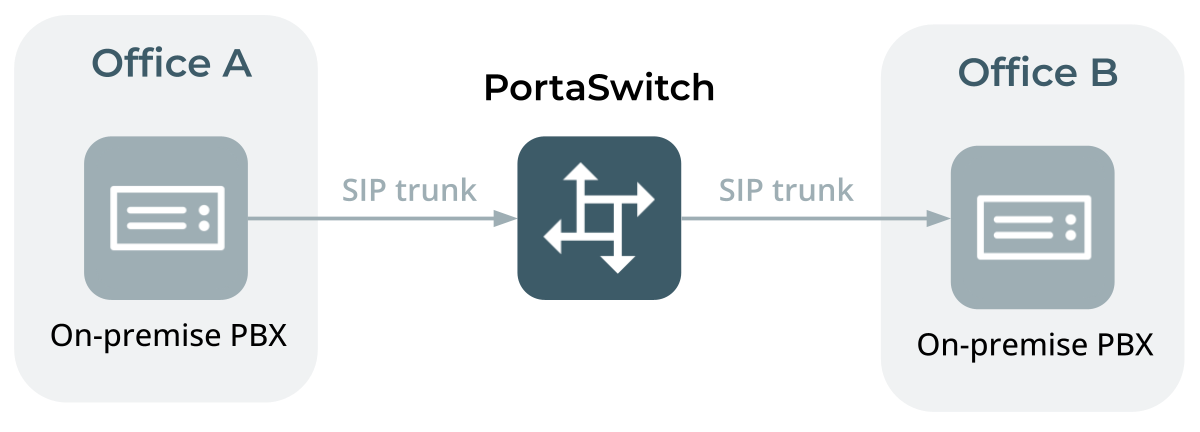SIP trunking allows the customers to send the calls from their own on-premises Private Branch Exchange (PBX) to the service provider's network and vice versa. The companies may use software like 3CX, Asterisk, etc. for on-premises PBX. The PBX is connected to the service provider's switch via a SIP trunk, which serves as virtual phone lines to handle simultaneous inbound and outbound calls. The calls are sent from the PBX to PortaSwitch and then they are routed according to the configuration.
SIP trunking can also be used for wholesale traffic exchange service, where simultaneously multiple calls are sent from one softswitch to the other and vice versa.
Why companies use the SIP trunking service
Unlike traditional telephony systems like E1 that can handle only 30 simultaneous calls, each SIP trunk can handle an infinite number of concurrent calls, as long as the network's bandwidth and computing resources can accommodate the traffic. This is especially beneficial for customer contact centers that receive dozens, or even hundreds, of simultaneous calls a day to a centralized phone number.
The SIP trunking business model allows to make voice and video calls and even exchange faxes using the internet connection, thus eliminating the need of costly installation of traditional phone lines. Since SIP calls take place across the Internet, they tend to be cheaper and more efficient than calls placed through traditional phone networks. Customers won’t have to pay as much for extra lines or for making long-distance calls as they would with traditional phone lines.
“Union” bank contacts a SIP trunking provider to help them launch a 24/7 helpdesk service. The bank has an on-premise PBX and the bank employees need to be able to handle calls from the bank’s clients.
The service provider creates a customer record for the "Union" bank in the system, sets up a SIP trunk as their main SIP trunking account, and provisions bank phone numbers to that account.
Now, the helpdesk employees are ready to receive calls from clients as the system will deliver all calls to the helpdesk phone number directly to the bank’s on-premise PBX. Also, if the bank needs to contact their clients, the SIP trunking provider will route calls from the helpdesk to the PSTN networks, e.g., to a client’s mobile number.
SIP trunking is a digital alternative to traditional wire and cable methods of managing multiple phone lines which enables small and medium-sized businesses to:
- Make international or long-distance calls at lower rates
- Receive incoming calls to toll-free numbers or phone numbers (DIDs) from other regions or countries
- Connect multiple branch offices in distinct regions or cities at zero per-minute cost
- Use advanced features, such as call recording, fax-to-email, or fail-over routing
- Prevent fraudulent calls if the PBX or IP phones get compromised
Configuration for the SIP trunking service
Depending on the way the PBX acquires the IP address for registration, refer to the corresponding handbooks to set up:
- SIP trunking for on-premise PBXs capable of digest authentication – for PBXes that use an IP address that can periodically change (dynamic IP address).
- SIP trunking for on-premise PBXs incapable of digest authentication – if a PBX does not imply a standard procedure for registration and authentication of incoming and outgoing calls.



